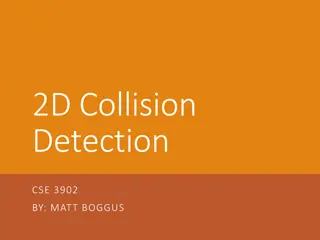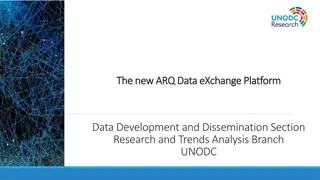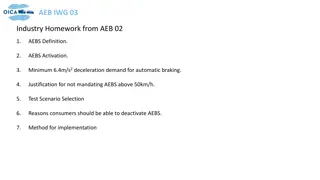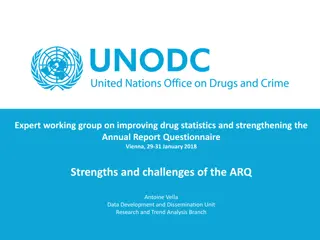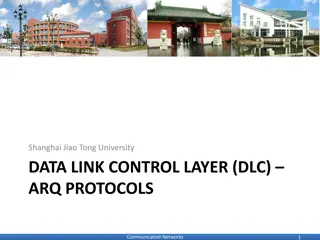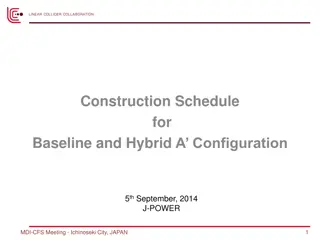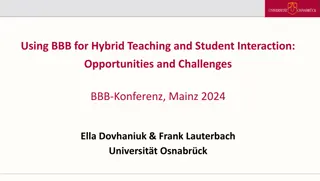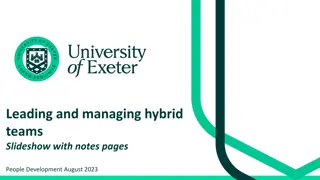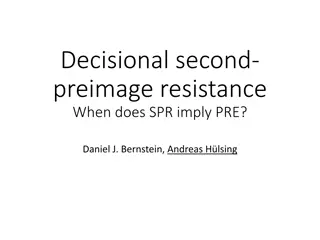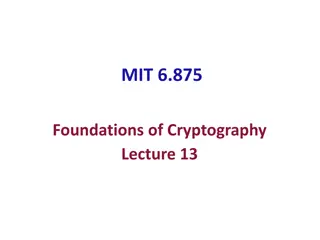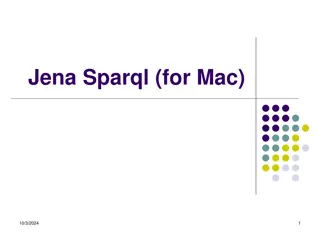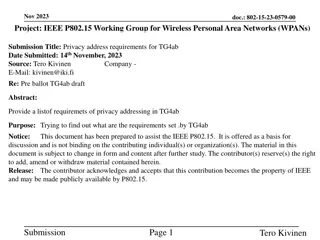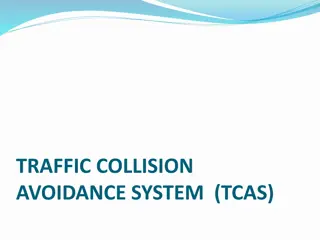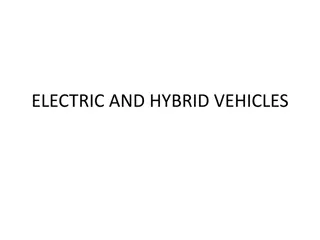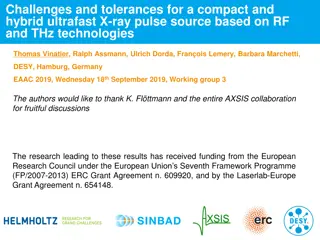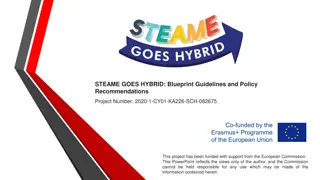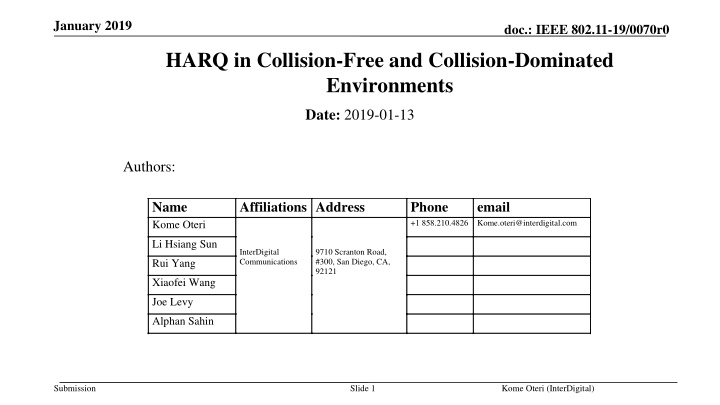
Performance Evaluation of HARQ in Different Wireless Environments
Evaluating the performance of Hybrid Automatic Repeat reQuest (HARQ) in collision-free and collision-dominated wireless environments is essential for improving reliability and goodput in data transmission. This study discusses the impact of HARQ schemes in interference-limited settings and provides solutions to enhance performance. Different HARQ methods such as Chase Combining (CC) and Incremental Redundancy (IR) are explored to assess their effectiveness in mitigating impairments like AWGN and interference from collisions.
Download Presentation

Please find below an Image/Link to download the presentation.
The content on the website is provided AS IS for your information and personal use only. It may not be sold, licensed, or shared on other websites without obtaining consent from the author. If you encounter any issues during the download, it is possible that the publisher has removed the file from their server.
You are allowed to download the files provided on this website for personal or commercial use, subject to the condition that they are used lawfully. All files are the property of their respective owners.
The content on the website is provided AS IS for your information and personal use only. It may not be sold, licensed, or shared on other websites without obtaining consent from the author.
E N D
Presentation Transcript
January 2019 doc.: IEEE 802.11-19/0070r0 HARQ in Collision-Free and Collision-Dominated Environments Date: 2019-01-13 Authors: Name Kome Oteri Affiliations Address InterDigital Communications Phone +1 858.210.4826 Kome.oteri@interdigital.com email 9710 Scranton Road, #300, San Diego, CA, 92121 Li Hsiang Sun Rui Yang Xiaofei Wang Joe Levy Alphan Sahin Submission Slide 1 Kome Oteri (InterDigital)
January 2019 doc.: IEEE 802.11-19/0070r0 Abstract In this contribution, we evaluate the performance of HARQ in collision-free (AWGN-impaired) (interference-impaired) environments. We show that using the AWGN-impaired HARQ schemes in interference-limited environments results in a loss in performance and discuss some solutions to the problem. and collision-dominated Submission Slide 2 Kome Oteri (InterDigital)
January 2019 doc.: IEEE 802.11-19/0070r0 Introduction Hybrid ARQ is one of the candidate features under discussion for 802.11 EHT [1] HARQ combines retransmissions at the bit or symbol level before decoding to improve performance (e.g. reliability, goodput) compared with simple ARQ (used in existing 802.11) that decodes the latest retransmission (ReTx). Its performance in 802.11 (using 802.11ax as baseline) has shown to provide some gains over simple ARQ in [2],[3],[4],[5],[6], and [7] In this contribution, we study the performance of HARQ in the following environments: Collision-free (AWGN-impaired): An environment where the primary impairment is AWGN Collison-dominated (interference-impaired): An environment where the primary impairment is interference from collisions. We show that using the AWGN-impaired HARQ schemes in the interference-limited environments results in a loss in performance and discuss some solutions to the problem. Submission Slide 3 Kome Oteri (InterDigital)
January 2019 doc.: IEEE 802.11-19/0070r0 HARQ Overview HARQ may be Chase Combining (CC) HARQ or Incremental Redundancy (IR) HARQ In CC HARQ, each ReTx contains the same data and parity bits This can be symbol-level CC (SL CC) or bit-level CC (BLCC). SL CC has better performance [8] and may have lower memory requirements CC does not require any changes to the current FEC in the 802.11 standard In IR HARQ, each ReTx uses a different set of coded bits with different redundancy versions generated by puncturing the encoder output. ReTx are punctured to contain both parity and systematic bits (self decodable packets) or parity bits only (non self-decodable packets) Self-decodable IR-HARQ allows for decoding individual packets in case of entire packet loss due to collisions. May require changes to the current FEC in the 802.11 standard SL CC and self decodable IR HARQ are recommended for study during the EHT TG Submission Slide 4 Kome Oteri (InterDigital)
January 2019 doc.: IEEE 802.11-19/0070r0 HARQ Overview (ctd) HARQ may be adaptive or non-adaptive In adaptive HARQ, the ReTx may change the MCS and channel resources used. In non-adaptive HARQ, the ReTx uses the same MCS and channel resources For indoor channels with low Doppler, allowing a change in resources may be beneficial HARQ may be synchronous or non-asynchronous In synchronous HARQ, the ReTx for each process occur at predefined times relative to the initial transmission For asynchronous HARQ, the ReTx can occur at any time relative to the initial transmission 802.11 is inherently asynchronous due to the use of an unlicensed channel Adaptive, asynchronous HARQ is recommended for the EHT TG Submission Slide 5 Kome Oteri (InterDigital)
January 2019 doc.: IEEE 802.11-19/0070r0 Evaluation Metrics Packet Error Rate (PER): PER = Number of successful packets / total number of unique information packets Does not take into account the number of retransmissions, e.g. may have HARQ with lower PER but multiple retransmissions. Number of Transmissions (ReTx): Average Number of transmissions till successful packet decoding Goodput: Successful Throughput incorporating retransmissions Goodput = (1-PER) x no. of bits per packet / packet duration / ReTx 1-PER : number of successful transmissions No. of bits per packet / packet duration : Raw throughput Submission Slide 6 Kome Oteri (InterDigital)
January 2019 doc.: IEEE 802.11-19/0070r0 Simulations I: HARQ in AWGN This is the collision-free environment Simulation Assumptions 802.11ax, 242 tone RU, 20 MHz, Regular GI, 4x HE-LTF, AWGN channel 1x1, BCC, MCS 4 (BCC: 16 QAM rate ) Packet length = 1000 bits, Single MSDU/MPDU No impairments, ideal Channel Estimation, ideal feedback Schemes ARQ with 2 transmissions Bit level Chase Combining HARQ with 2 transmissions Symbol level Chase Combining HARQ with 2 transmissions IR HARQ with 2 transmissions Submission Slide 7 Kome Oteri (InterDigital)
January 2019 doc.: IEEE 802.11-19/0070r0 Simulation I: Goodput and PER Gain in HARQ seen at lower SNRs with the best performance from IR-HARQ. Submission Slide 8 Kome Oteri (InterDigital)
January 2019 doc.: IEEE 802.11-19/0070r0 Simulation II: HARQ with Link Adaptation in Fading Channel Combine HARQ with link by selecting best performance for all MCS at any SNR Assumptions: 802.11ax, 242 tone RU, 20 MHz, Regular GI, 4x HE-LTF, DNLOS channel Nt = Nr = Nss = 2, BCC IR HARQ MSDU/MPDU Payload size: MCS 0~3:1500B, MCS4:2500B, MCS5:3000B 1 MPDU per PPDU No impairments and ideal Channel Estimation Submission Slide 9 Kome Oteri (InterDigital)
January 2019 doc.: IEEE 802.11-19/0070r0 Simulation II: Goodput Assumes ideal link adaptation for both HARQ and non HARQ Up to 4 dB gain at lower SNRs Submission Slide 10 Kome Oteri (InterDigital)
January 2019 doc.: IEEE 802.11-19/0070r0 HARQ and Interference Unlicensed noise model is collision-dominated, with uncontrolled and highly variable interference power per PPDU [9] Combining transmissions that have been corrupted by collisions may impact the performance [9][7][10]. Solutions that have been discussed include Limit to positively identified PPDUs [9] Limit to non-collision environments e.g. trigger based transmission or multi-AP deployment [5] Use a collision aware receiver : first decode without combining and do not contaminate buffer [7] Account for impairment type, i.e. loss due to collision or AWGN [10] We will show the performance of HARQ in 802.11 with collisions and demonstrate how accounting for collisions may resolve the problem. Submission Slide 11 Kome Oteri (InterDigital)
January 2019 doc.: IEEE 802.11-19/0070r0 Simplified Collision Modeling pream ble Desired packet data pream ble pream ble Colliding packet data data Collision overlap Packet overlap is a uniform distribution AP1 AP2 intf STA1 STA2 STA at edge, overlapped packet at 0 dB relative to signal HARQ beneficial but interference is high and non-Gaussian From [11] Submission Slide 12 Kome Oteri (InterDigital)
January 2019 doc.: IEEE 802.11-19/0070r0 Simultion III: HARQ and collisions in AWGN Assumptions PPDU Format: 802.11ax, 242 tone RU, 20 MHz, Regular GI, AWGN channel 1x1, BCC, MCS 4 (BCC: 16 QAM rate ) Packet length = 1000 bits, Single MSDU/MPDU Ideal Channel Estimation Interference at 0 dB, e.g. BSS edge STA within 2 APs that form a hidden node set. Ideal collision estimation with collision probability = 0.2. Schemes ARQ with 4 transmissions HARQ IR with 4 transmissions Collision aware HARQ IR with 4 transmissions Attempt decoding without combining Add packet to buffer if there is no collision, i.e. ideal collision estimator Submission Slide 13 Kome Oteri (InterDigital)
January 2019 doc.: IEEE 802.11-19/0070r0 Simulation III: Goodput and PER At higher SNRS, AWGN-impaired HARQ (IR) performs very poorly Submission Slide 14 Kome Oteri (InterDigital)
January 2019 doc.: IEEE 802.11-19/0070r0 Summary of Results PER floor seen due to collisions in system. Floor based on collision model, i.e. overlap, relative strength and collision probability, e.g. Pc ~ 40% at 25 nodes [11] At high SNRs (for the MCS), simple ARQ is adequate The performance of AWGN-impaired HARQ is poor due to combining corrupted transmissions. Collision aware HARQ is equal to simple ARQ At low SNRs (for the MCS), HARQ shows some gains However, collision aware HARQ shows larger gains over arq and IR HARQ Conclusion: Need method to enable receiver estimate if collision or not, or to turn on classic HARQ only at lower SNRs Submission Slide 15 Kome Oteri (InterDigital)
January 2019 doc.: IEEE 802.11-19/0070r0 Conclusion HARQ shows improvements in performance over simple ARQ Symbol Level Chase Combining and self decodable IR HARQ are recommended for study during the EHT TG. Adaptive, asynchronous HARQ is recommended for the EHT TG. In collision dominated environments, direct implementation of HARQ may result in worse performance than simple ARQ Collision Aware HARQ methods result in the best performance in these environments Submission Slide 16 Kome Oteri (InterDigital)
January 2019 doc.: IEEE 802.11-19/0070r0 References [1] IEEE 802.11-18/1231r1, EHT draft proposed PAR, Laurent Cariou (Intel), Nov 2018 [2] IEEE 802.11-18/1979r0, HARQ performance analysis, Tianyu Wu (Samsung), Nov 2018 [3] IEEE 802.11-18/1992, HARQ Feasibility, Hongyuan Zhang (Marvell), Nov 2018 [4] IEEE 802.11-18/2031r0 BRCM, HARQ gain studies, Sindhu Verma (Broadcom), Nov. 2018 [5] IEEE 802.11-18/1963r1, Discussion on HARQ for EHT, Bo Sun (ZTE), Nov 2018 [6] IEEE 802.11-18/2029r0, HARQ in EHT, Imran Latif (Quantenna), Nov 2018 [7] IEEE 802.11-18/1955r0, HARQ for EHT - Further Information, Shimi Shilo (Huawei), Nov 2018 [8] T. Ait-Idir, S. Saoudi, "Turbo packet combining strategies for the MIMO-ISI ARQ channel", Trans. Commun., vol. 57, no. 12, pp. 3782-3793, 2009 [9] IEEE 802.11-18/1549r0, Candidate Technology Review, Brian Hart (Cisco Systems), Sept 2018 [10] IEEE 802.11-18/1547r0, Technology Features for 802.11 EHT, Kome Oteri (InterDigital), Sept 2018 [11] N. Baldo, F. Maguolo, S. Merlin, A. Zanella, M. Zorzi, D. Melpignano, D. Siorpaes, "GORA: Goodput Optimal Rate Adaptation for 802.11 using Medium Status Estimation", Proceedings of IEEE ICC, May 2008. Submission Slide 17 Kome Oteri (InterDigital)
January 2019 doc.: IEEE 802.11-19/0070r0 Appendix Submission Slide 18 Kome Oteri (InterDigital)
January 2019 doc.: IEEE 802.11-19/0070r0 IR for BCC BCC: change puncturing pattern (implemented) : [1 1 1 0], [1 1 0 1], [1 0 1 1], [0 1 1 1] : [1, 1, 1, 0, 0, 1],[1, 1, 0, 1, 1, 0],[1, 1, 1, 0, 1, 0],[1, 1, 0, 1, 0, 1] 5/6: [1, 1, 1, 0, 0, 1, 1, 0, 0, 1],[1, 1, 1, 1, 1, 0, 0, 1, 0, 0], Submission Slide 19 Kome Oteri (InterDigital)
January 2019 doc.: IEEE 802.11-19/0070r0 Simulation I: Number of Transmissions Submission Slide 20 Kome Oteri (InterDigital)
January 2019 doc.: IEEE 802.11-19/0070r0 Simulation III: Number of Transmissions Transmissions Submission Slide 21 Kome Oteri (InterDigital)

